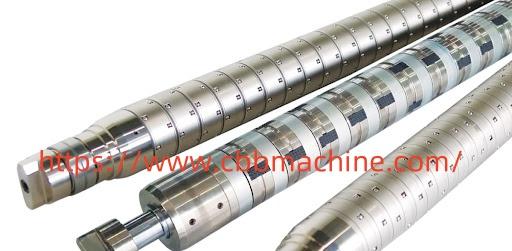In modern web handling and converting industries, precise tension control often hinges on the use of components like the Differential Air Shaft , which plays a vital role in multi-roll operations involving materials such as films, paper, laminates, and foils. Designed for applications where multiple cores need to be independently controlled on a single shaft, this tool ensures consistent and balanced torque across all positions. The internal air pressure enables each core to slip or rotate slightly depending on the winding tension, thereby reducing issues like telescoping and misalignment. Its contribution to maintaining high productivity and minimizing material waste makes it indispensable in demanding production lines.
Unlike conventional shafts that transfer torque uniformly, the differential air shaft utilizes friction elements to create slip at individual core positions. This innovation allows the shaft to handle materials with varying thickness or tension requirements. For instance, if a web material exhibits inconsistent stretching or density, the shaft can accommodate the variations without compromising roll quality. This feature becomes especially valuable in high-speed printing, coating, and laminating environments where uneven winding could disrupt the entire production cycle.
One of the notable advantages of this component is the ability to change cores quickly and efficiently. Many versions are engineered for tool-less core removal, saving time during setup and reducing machine downtime. As productivity becomes a growing concern across manufacturing sectors, solutions that streamline workflow without compromising on quality are seeing increased adoption.
From a structural perspective, most differential air shafts are crafted from lightweight yet durable materials like aluminum or carbon steel, reducing the burden on the overall machine while ensuring longevity. Moreover, the inclusion of specialized friction bands, rubber rollers, or ball-type friction mechanisms enhances the slip control. The adaptability of this system supports a broad range of web widths and core diameters, offering customization for varied production needs.
Regular maintenance of the shaft can significantly extend its service life. Keeping the air chambers clean, inspecting for air leaks, and replacing friction elements when worn ensures the shaft maintains optimal performance. Additionally, investing in a well-designed shaft not only boosts quality but also enhances operational safety, as tension-related failures can pose risks to both machinery and personnel.
Industries are increasingly recognizing the value of smarter, energy-efficient, and highly adjustable systems to maintain their competitive edge. By allowing independent torque adjustments across multiple cores, the differential air shaft supports this trend with precision and reliability. Whether integrated into slitting machines, rewinding systems, or custom converting solutions, it is an essential component for operations requiring fine control over roll tension and alignment.
To explore high-quality shaft options that are engineered for durability and precision, visit www.cbbmachine.com.

